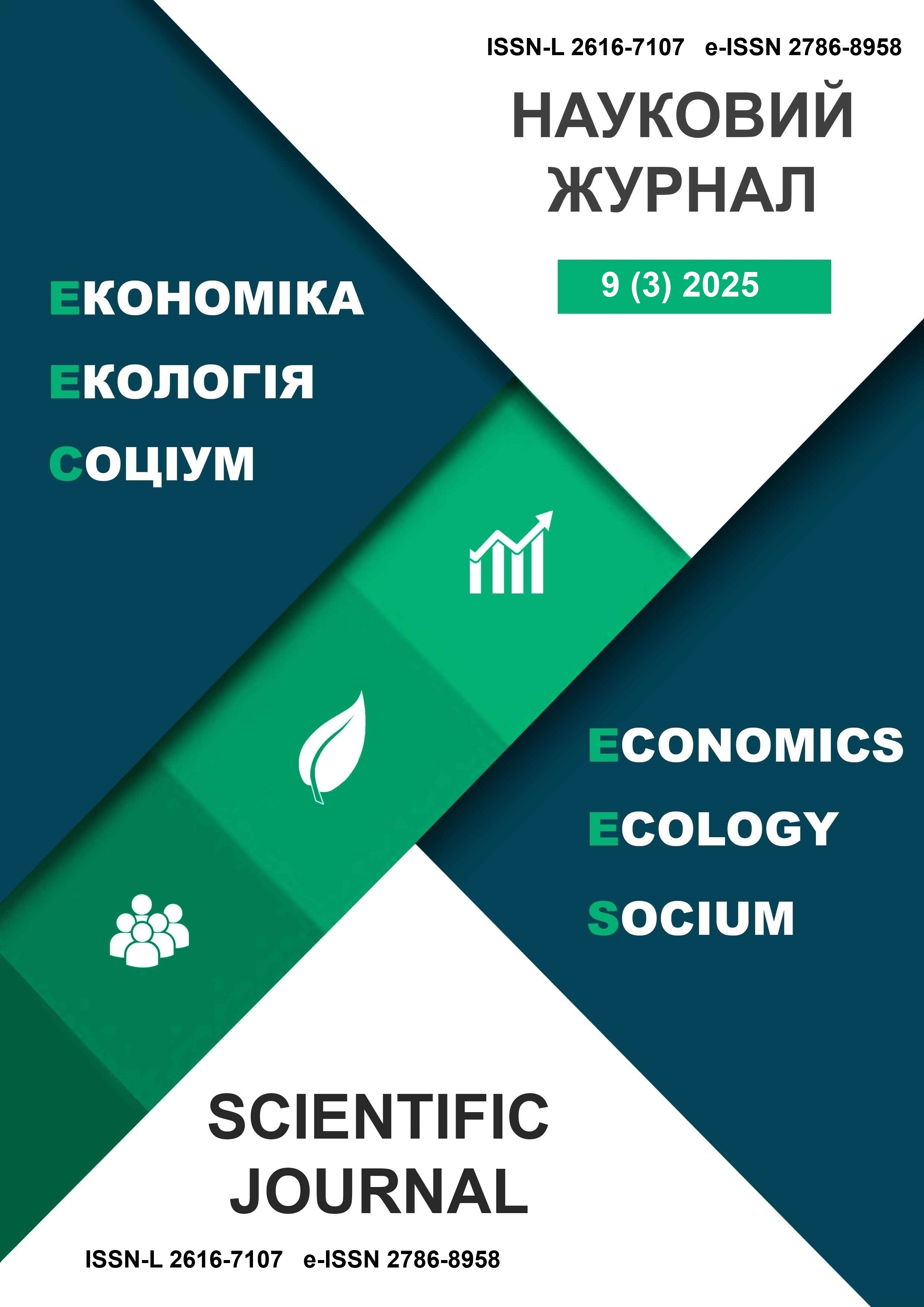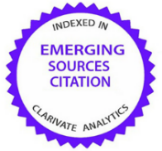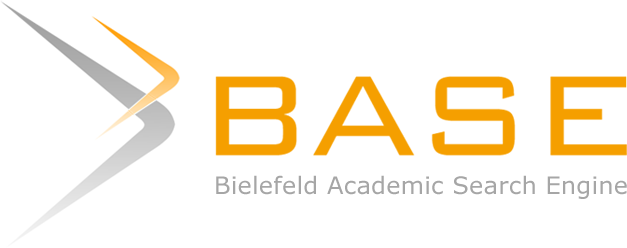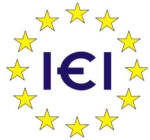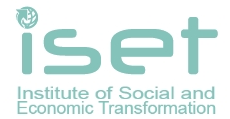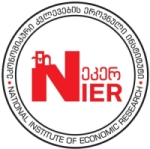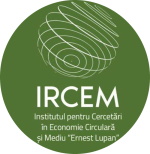Assessing Strategic Planning in Postmodern Organizations: A Case Study in the Public Sector
Abstract
Introduction. Different sectors of the economy adopt a dynamic approach to the role of strategic planning, presenting specific arguments for its application as a management tool and the rationale behind measuring its effectiveness. Research gaps remain, as justifying the relevance of strategic planning continues to be important for postmodern organisations.
Aim and tasks. This study presents an instrument for managers that allows them to evaluate the results of strategic planning and thereby justify the need for strategic planning. This study explores gaps in the current practice of strategic planning in the public sector and predicts opportunities for improving performance by focusing on public organisations.
Results. An empirical study was conducted at the level of a single-purpose public sector organisation. The empirical study was divided into three parts: studies of the desired and achieved state of the organisation’s performance quality, a set of rationally composed quantitative and qualitative research methods was selected for the latter, and finally, a synthesis of research results using the formula for assessing the maturity of strategic planning activities. The calculated average maturity score (2.71) of the managerial activity components in the chosen organisation indicates that its strategic planning maturity is at Level 3 (completed). To reach Level 4, the goals and tasks of the projects must be comprehensively aligned with the strategy, and project success should be measured based on compliance with the strategy concerning all stakeholders.
Conclusions. An empirical study of strategic planning in a public sector organisation based on an integral methodology showed that the process was at an average level of maturity. The need for a link between strategy and projects was identified as a relevant gap in the literature. This coherence facilitates effective risk management regarding the logical connection between tasks and their implementation, compliance with the implementation of goals with the norm, and the coincidence of the views of the organisation and its stakeholders on the quality of activities. Key issues include the mission’s formal nature, bureaucratisation of the process, and stakeholders’ poor awareness of project results. To move to the highest level, full strategy and project synchronisation and assessment of their success through the prism of stakeholder satisfaction are necessary.
Keywords:
Strategic Planning, Decisions, Operational Maturity, Measurement, Postmodern Organisation.References
Ahmad, I., & Ahmad, S. B. (2019). The mediation effect of strategic planning on the relationship between business skills and firm’s performance: Evidence from medium enterprises in Punjab, Pakistan. Opción: Revista de Ciencias Humanas y Sociales, (24), 746–778.
Aldehayyat,J. S., Al Khattab, A. A. & Anchor,J. R. (2011). The use of strategic planning tools and techniques by hotels in Jordan. Management Research Review, 34(4), 477–490. https://doi.org/10.1108/01409171111117898
Alpi, K. M., & Evans, J. J. (2019). Distinguishing case study as a research method from case reports as a publication type. Journal of the Medical Library Association: JMLA, 107(1), 1–5. https://doi.org/10.5195/jmla.2019.615
AlQershi, N. (2021). Strategic thinking, strategic planning, strategic innovation and the performance of SMEs: the mediating role of human capital. Management Science Letters, 1003–1012. https://doi.org/10.5267/J.MSL.2020.9.042
Amine, L. S., & Smith, J. A. (2009). Challenges to modern consumer segmentation in a changing world: The need for a second step. Multinational Business Review, 17(3), 71–100. https://doi.org/10.1108/1525383X200900018
Amoo, N., Lodorfos, G., & Mahtab, N. (2023). Over half a century of strategic planning performance research – what have we been missing? International Journal of Organizational Analysis, 31(5), 1623–1652. https://doi.org/10.1108/ijoa-08-2021-2919
Balkaran, L. (2016). The importance of auditing your company’s strategic plan. EDPACS, 54(3), 1–10. https://doi.org/10.1080/07366981.2016.1210970
Benzaghta, M. A., Elwalda, A., Mousa, M., Erkan, I., & Rahman, M. (2021). SWOT analysis applications: An integrative literature review. Journal of Global Business Insights, 6(1), 55–73. https://doi.org/10.5038/2640-6489.6.1.1148
Bishop, D. A. (2018). Key performance indicators: Ideation to creation. IEEE Engineering Management Review, 46(1), 13–15. https://doi.org/10.1109/emr.2018.2810104
Bolisani, E., & Bratianu, C. (2017). Knowledge strategy planning: an integrated approach to manage uncertainty, turbulence, and dynamics. Journal of Knowledge Management, 21(2), 233–253. http://dx.doi.org/10.1108/JKM-02-2016-0071
Bryson, J. M., & George, B. (2024). Strategic planning for public and nonprofit organizations: A guide to strengthening and sustaining organizational achievement (6th ed.). John Wiley & Sons.
Busetto, L., Wick, W., & Gumbinger, C. (2020). How to use and assess qualitative research methods. Neurological Research and Practice, 2(1), 14. https://doi.org/10.1186/s42466-020-00059-z
Cheung, H. Y., & Yu, E. (2020). A review of the strategic planning process in the Hong Kong Police Force. Public Administration and Policy, 23(3), 245–258. https://doi.org/10.1108/PAP-06-2020-0027
David, F. R., David, F. R., Kovács, T. Z., & Nábrádi, A. (2020). Emerging trends in strategic planning. Applied Studies in Agribusiness and Commerce, 14(1–2), 23–31. https://doi.org/10.19041/apstract/2020/1-2/3
Demir, F. (2018). A strategic management maturity model for innovation. Technology Innovation Management Review, 8, 13–21. https//doi.org/10.22215/timreview/1196
Dwi Retnandari, N. (2022). Implementation of strategic planning in regional/ municipal governments, obstacles and challenges. Policy & Governance Review, 6(2), 155. https://doi.org/10.30589/PGR.V6I2.556
Escudero-Mancebo, D., Fernández-Villalobos, N., Martín-Llorente, Ó., & Martínez-Monés, A. (2023). Research methods in engineering design: a synthesis of recent studies using a systematic literature review. Research in Engineering Design, 34(2), 221–256. https://doi.org/10.1007/s00163-022-00406-y
Fischer, M., Imgrund, F., Janiesch, C., & Winkelmann, A. (2020). Strategy archetypes for digital transformation: Defining meta objectives using business process management. Information & Management, 57(5), 103262. https://doi.org/10.1016/J.IM.2019.103262
Fuertes, G., Alfaro, M., Vargas, M., Gutierrez, S., Ternero, R., & Sabattin, J. (2020). Conceptual framework for the strategic management: a literature review - descriptive. Journal of Engineering, 2020, Article 6253013, 1–21. https://doi.org/10.1155/2020/6253013
Gandrita, D. M. (2023). Improving strategic planning: the crucial role of enhancing relationships between management levels. Administrative Sciences, 13(10), 211. https://doi.org/10.3390/admsci13100211
Gandrita, D. M., & Rosado, D. P. (2022). Strategic planning pitfalls in society 5.0: a systematic literature review. Mediterranean Journal of Social Sciences, 13(5), 93. https://doi.org/10.36941/mjss-2022-0042
George, B., Pandey, S. K., Steijn, B., Decramer, A., & Audenaert, M. (2021). Red tape, organizational performance, and employee outcomes: meta-analysis, meta-regression, and research agenda. Public Administration Review, 81(4), 638–651. https://doi.org/10.1111/puar.13327
Glaister, K. E., Dincer, O., Tatoglu, E., Demirbag, M., & Zaim, S. (2008). A causal analysis of formal strategic planning and firm performance: Evidence from an emerging country. Management Decision, 46(3), 365–391. http://dx.doi.org/10.1108/00251740810863843
Gomes, J. G. C., Okano, M. T., Simões, E. A., & Otola, I. (2019). Management strategy and business models in the era of digital transformation. South American Development Society Journal, 5(14), 252. https://doi.org/10.24325/issn.2446-5763.v5i14p252-270
Guyadeen, D., Henstra, D., Kaup, S., & Wright, G. (2022). Evaluating the quality of municipal strategic plans. Evaluation and Program Planning, 96(3), 102186. https://doi.org/10.1016/J.EVALPROGPLAN.2022.102186
Haanaes, K., & Reeves, M. (2016). Digital disruption – beware of the success trap. IMD business school and Boston Consultancy Group.
Hamdan, M. K., El Talla, S. A., Al Shobaki, M. J., & Abu-Naser, S. S. (2020). The effect of choosing strategic goals and core capabilities on the creative behavior of organizations. International Journal of Academic Information Systems Research, 4(4), 54–75.
Hamouda, M., & Abderrazak, G. (2013). The Postmodern Consumer: An Identity Constructor? International Journal of Marketing Studies. 5, 41–41.https://doi.org/10.5539/ijms.v5n2p41
Hess, J., & Tessa, F. (2019). Strategic flexibility in turbulent times: impact of CEO’s willingness and permission to change. Chapter 2 in Book: Strategic Responsiveness and Adaptive Organizations: New Research Frontiers in International Strategic Management, 9–24. https://org.doi/10.1108/978-1-78973-011-120191002
Hidalgo, E. S., & Morell, M. F. (2019). Co-designed strategic planning and agile project management in academia: case study of an action research group. Palgrave Communications, Palgrave Macmillan, 5(1), 1–13. https://org.doi/10.1057/s41599-019-0364-0
Johnsen, Å. (2021). Does formal strategic planning matter? An analysis of strategic management and perceived usefulness in Norwegian municipalities. International Review of Administrative Sciences, 87(2), 380–398. https://doi.org/10.1177/0020852319867128
Johnsen, Å. (2022). Strategic planning in turbulent times: Still useful? Public Policy and Administration, 38(4), 445-465. https://doi.org/10.1177/09520767221080668
Kachaner, N., King, K., & Stewart, S. (2016). Four best practices for strategic planning. Strategy & Leadership, 44 (4), 26–31. https://doi.org/10.1108/SL-06-2016-0046
Karatop, B. (2021). End-to-end strategic planning model proposal with artificial intelligence. Journal of the Human and Social Sciences Researches, 10(4), 3526–3545. https://doi.org/10.15869/itobiad.891561
Kemp, L. J. (2013). Modern to postmodern management: developments in scientific management. Journal of Management History, 19(3), 345–361. https://doi.org/10.1108/jmh-02-2011-0005
Kneipp, J. M., Gomes, C.M., Bichueti, R. S., Frizzo, K., & Perlin, A. P. (2019). Sustainable innovation practices and their relationship with the performance of industrial companies.Revista de Gestão, 26(2), 94–111. https://doi.org/10.1108/REGE-01-2018-0005
Knight, J. (2015). Investing in human resource development: strategic planning for success in academic libraries. Advances in Library Administration and Organization, 33, 1–42. https://doi.org/10.1108/S0732-067120150000033001
Kools, M., & George, B. (2020). Debate: The learning organization - a key construct linking strategic planning and strategic management. Public Money & Management, 40, 1–3. https://doi.org/10.1080/09540962.2020.1727112
Korkmaz, G. (2020). The moderating effect of internal audit in strategic planning implementation success. Istanbul Management Journal, 88, 57-84. https://doi.org/10.26650/imj.2020.88.0003
Kumar, S., & Geetika, G. (2019). The McKinsey 7S model helps in strategy implementation: a theoretical foundation. Tecnia Journal of Management Studies, 14(1), 7–12.
Kunzmann, K. R. (2014). Strategic planning: a chance for spatial innovation and creativity. The Planning Review 49(3), 28–31. http://dx.doi.org/10.1080/02513625.2013.859003
Lakens, D. (2022). Sample size justification. Collabra: Psychology, 8 (1), 33267. https://doi.org/10.1525/collabra.33267
Leskaj, E. (2017). The challenges faced by the strategic management of public organizations. Revista Administratie Si Management Public, 2017(29), 151–161.
Marinović-Matović, I. (2020). PESTEL analysis of external environment as a success factor of startup business. In Consciens Conference Proceedings: Pandemics and their impact on society (pp. 96–102). https://doi.org/10.5281/zenodo.4058794
Marinović-Matović, I., & Arsić, L. (2020). Ecological dimension of PESTEL analysis in small enterprises in the Republic of Serbia. Reciklaza i odrzivirazvoj, 13(1), 63–71. https://doi.org/10.5937/ror2001063m
Messaoud, H. E. B. (2022). A review on the importance of strategic planning in business. International Journal of Economics and Management Studies, 9(7), 1–5. https://doi.org/10.14445/23939125/IJEMS-V9I7P101
Molineux, J. (2018). Using action research for change in organizations: processes, reflections and outcomes.Journal of Work-Applied Management, 10(1), 19–34. https://doi.org/10.1108/JWAM-03-2017-0007
Mufudza, T. (2019). Dynamic strategy in a turbulent business environment. Chapters, in: Okechukwu Lawrence Emeagwali & Hasan Yousef YousefAljuhamni (ed.), Strategic Management - a Dynamic View, IntechOpen.https://doi.org/10.5772/INTECHOPEN.81250
Narayanan, V. K., & Fahey, L. (2013). Seven management follies that threaten strategic success, Strategy & Leadership, 41 (4), 24–29. http://dx.doi.org/10.1108/SL-04-2013-0022
Ogbeiwi, O. (2018). General concepts of goals and goal-setting in healthcare: A narrative review. Journal of Management and Organization, 27(2), 324–341. https://doi.org/10.1017/JMO.2018.11
Oluwaseun, Y., Mathew, O., & Charles, J. (2020). Strategic planning and business performance: perspective of entrepreneurs in Ikotun-Igando local community development area of Lagos state. Journal of Business and Organizational Development, 12, 1–20.
Parliament of the Republic of Lithuania. (2021). Strategic management methodology (Resolution No. 292). https://e-seimas.lrs.lt/portal/legalAct/lt/TAD/5e3aa191a8e511eb98ccba226c8a14d7
Parmenter, D. (2025). Key performance indicators: Developing, implementing, and using winning KPIs (4th ed.). John Wiley & Sons.
Polowczyk, J. (2012). Strategic management at the beginning of the XXI century: the impact of crisis turbulences. Economics and Business Review, 12(3), 81–98. https://doi.org/10.18559/ebr.2012.3.851
Puglieri, F., Salvador, R., Omar, R.‐ H., Edmundo, F., Cassiano, P., Antonio, F., & Aldo, O. (2022). Strategic planning oriented to circular business models: a decision framework to promote sustainable development. Business Strategy and the Environment. 31, 3254–3273. https://doi.org/10.1002/bse.3074
Putri, A. D., Ghazali, A., & Ahluwalia, L. (2021). Analysis of company capability using 7s Mckinsey framework to support corporate succession (Case study: PT X Indonesia). ManajemenBisnis, 11(1), 44–53. https://doi.org/10.22219/MB.V11I1.17371
Pyi Wun, L N. S. (2019). Impact of strategic planning on organisational performance of microfinance institution in Myanmar. International Journal on Recent Trends in Business and Tourism (IJRTBT), 3(2), 48–55.
Rajnoha, R., Lesnikova, P., Stefko, R., Schmidtova, J., & Formanek, I. (2019). Transformations in strategic business planning in the context of sustainability and business goals setting. Transformations in Business & Economics, 18(2), 44–66.
Raudeliūnienė, J., Davidavičienė, V., & Jakubavičius, A. (2018). Knowledge management process model, Entrepreneurship and Sustainability Issues, 5(3), 542–554. https://doi.org/10.9770/jesi.2018.5.3(10)
Raudeliūnienė, J., Tvaronavičienė, M., & Blažytė, M. (2020). Knowledge management practice in general education schools as a tool for sustainable development. Sustainability, 12(10), 4034. https://doi.org/10.3390/su12104034
Roberts, J. K., Pavlakis, A. E., & Richards, M. P. (2021). It’s more complicated than it seems: virtual qualitative research in the Covid-19 era. International Journal of Qualitative Methods, 20. https://doi.org/10.1177/16094069211002959
Rosli, M. H. bin, Md Ariff, F. F. binti, & Said, J. binti. (2018). Balanced Scorecard (BSC): Does it really matter in Malaysian private institutions of higher learning? In Proceedings of the International Seminar on Accounting for Society (pp. 64–71). Bachelor Degree of Accounting Study Program, Faculty of Economy, Universitas Pamulang.
Sarhadi, M., Yousefi, S., & Zamani,A. (2018). Participative project management as a comprehensive response to postmodernism criticisms: the role of communication. Int. J. Manage. Project Bus, 11 (4), 935–959.
Sharif, A. M., & Irani, Z. (2017). Policy making for global food security in a volatile, uncertain, complex and ambiguous (VUCA) world. Transforming Government: People, Process and Policy, 11(4), 523–534. https://doi.org/10.1108/TG-08-2017-0050
Tapinos, E., Dyson, R. G., & Meadows, M. (2005). The impact of performance measurement in strategic planning. International Journal of Productivity and Performance Management, 54(5/6), 370–384. https://doi.org/10.1108/17410400510604539
Thesing, T., Feldmann, C., & Burchardt, M. (2021). Agile versus waterfall project management: decision model for selecting the appropriate approach to a project. Procedia Computer Science, 181, 746–756. https://doi.org/10.1016/J.PROCS.2021.01.227
Yeaw Chong, R. S. (2022). PEST analysis of the direct selling industry in China. National e-conference 2022 (FReN-C 2022) Proceedings (3th Edition), 5–21.
Zbuchea, A., Ivan, L., Petropoulos, S., & Pinzaru, F. (2020). Knowledge sharing in NGOs: the importance of the human dimension. Kybernetes, 49(1), 182–199. https://doi.org/10.1108/k-04-2019-0260
If the article is accepted for publication in the journal «Economics. Ecology. Socium» the author must sign an agreementon transfer of copyright. The agreement is sent to the postal (original) or e-mail address (scanned copy) of the journal editions.
